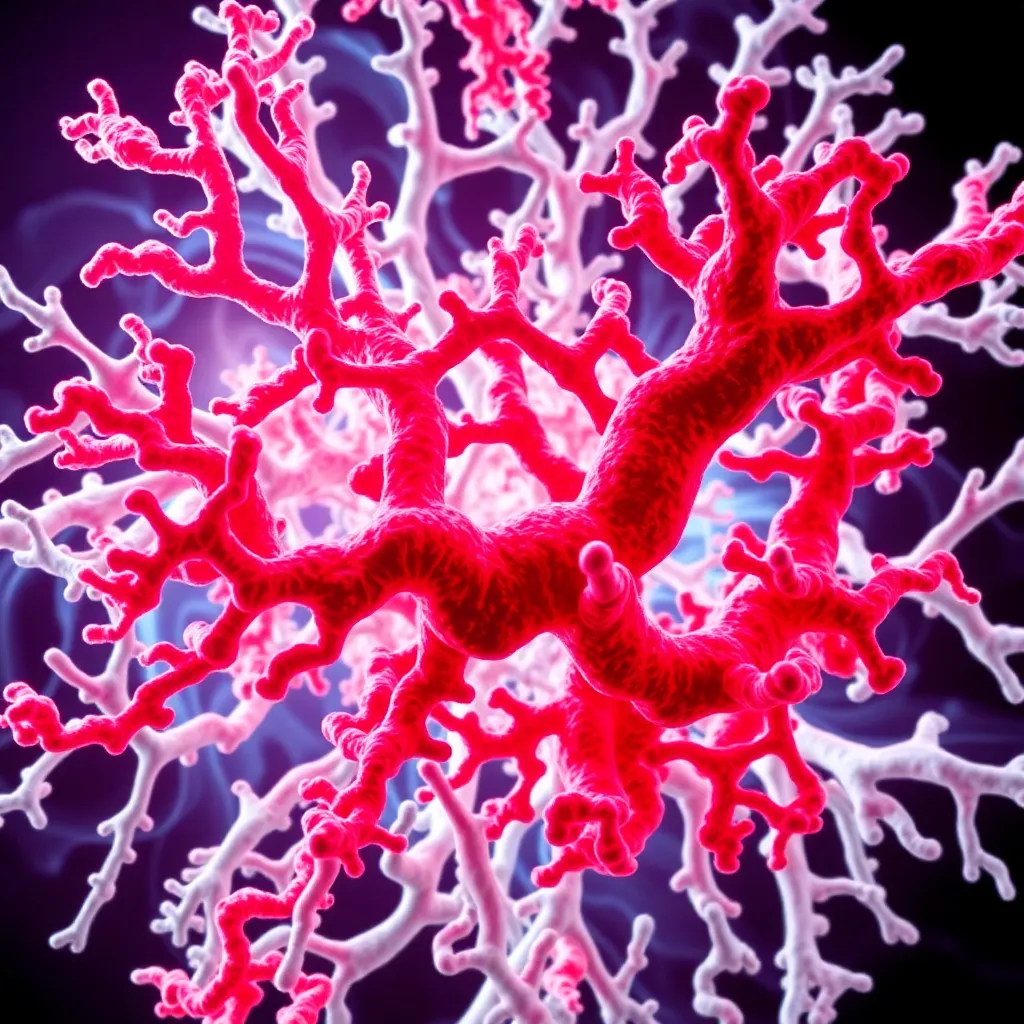
Ubiquitin-specific protease 7 (USP7) is a crucial enzyme that plays a significant role in cancer development and progression. Researchers have discovered a promising approach to modulating USP7 activity through its allosteric site, which could lead to new and effective cancer treatments. This study utilized advanced computational techniques, including molecular modeling, docking, and molecular dynamics simulations, to identify potential allosteric site modulators of USP7 from a library of 80 compounds. The findings reveal several compounds with high binding affinities and favorable drug-like properties, making them worthy of further investigation as potential cancer therapies. This research highlights the power of cheminformatics in accelerating drug discovery and development processes, paving the way for more targeted and effective cancer treatments.
Uncovering the Importance of USP7 in Cancer
Cancer remains a significant global health challenge, with nearly 10 million deaths attributed to it in 2020 alone. The complex and multifactorial nature of cancer, involving genetic mutations, environmental factors, and immune evasion mechanisms, poses ongoing challenges to effective treatment. One promising target in the fight against cancer is the enzyme ubiquitin-specific protease 7 (USP7), also known as HAUSP.
USP7 is a deubiquitinating enzyme that plays a crucial role in various cellular processes, including DNA repair, cell cycle regulation, and immune response modulation. Notably, the dysregulation of USP7 has been linked to several diseases, particularly cancer, making it an attractive therapeutic target. At basal expression levels, USP7 stabilizes the p53 protein, a well-known tumor suppressor. However, the overexpression of USP7 leads to the deubiquitination of MDM2, a negative regulator of p53, resulting in p53 degradation and promoting pro-tumorigenic roles.

Furthermore, increased levels of USP7 have been reported to exert immunosuppressive functions by modulating the activity of ubiquitin to an allosteric site within its catalytic domain. This allosteric site plays a critical role in regulating the enzyme’s activity, as it undergoes dynamic changes that can either block or enable the active site, allowing or preventing the enzyme from performing its deubiquitination function.
The inhibition of the allosteric site of USP7 to prevent the binding of ubiquitin has been identified as a viable approach for cancer drug discovery. While the inhibition of USP7 is a promising strategy, there are currently no approved inhibitors in clinical use, highlighting the need for further research and development in this area.

Cheminformatics-Aided Discovery of Potential Allosteric Site Modulators
In this study, the researchers employed a range of computational techniques, collectively known as cheminformatics, to identify potential allosteric site modulators of USP7 from a library of 80 compounds. The study involved the following key steps:
1. Molecular Docking: The compound library was subjected to virtual screening using molecular docking algorithms to identify compounds with high binding affinities for the USP7 allosteric site.
2. Binding Free Energy Calculations: The top-scoring compounds were further evaluated by calculating their binding free energies, which provided insights into the stability and strength of their interactions with the target protein.
3. Drug-Likeness and Pharmacokinetic Evaluation: The hit compounds were assessed for their drug-like properties and pharmacokinetic profiles, ensuring they possessed the necessary characteristics for potential drug development.
4. Biological Activity Prediction: Quantitative structure-activity relationship (QSAR) models were developed to predict the inhibitory potentials of the hit compounds, providing an additional layer of screening and prioritization.
5. Molecular Dynamics Simulations: The dynamic behavior of USP7 upon the binding of the hit compounds was investigated through molecular dynamics simulations, confirming the stability of the protein-ligand complexes.
Promising Compounds Identified as Potential Allosteric Site Modulators
The cheminformatics-driven approach led to the identification of eight compounds from the initial library that exhibited high binding affinities for the USP7 allosteric site, with docking scores ranging from -7.491 to -11.43 kcal/mol, significantly higher than the reference compound, P217564, which had a docking score of -5.671 kcal/mol.
The top four compounds not only showed high binding affinities but also possessed favorable drug-like properties, good pharmacokinetic profiles, and predicted inhibitory potentials comparable to the reference compound. Molecular dynamics simulations further confirmed the stability of the protein-ligand complexes, indicating the potential of these compounds to effectively modulate the activity of USP7.
Implications and Future Directions
The findings of this study highlight the power of cheminformatics in accelerating the drug discovery process for cancer treatment. By leveraging computational techniques, the researchers were able to efficiently screen a compound library and identify promising candidates as potential allosteric site modulators of USP7, a crucial target in cancer therapy.
The identified compounds possess the necessary characteristics, such as drug-like properties and favorable pharmacokinetic profiles, to warrant further investigation and optimization. Experimental validation and in-depth studies on the specific mechanisms of action and efficacy of these compounds will be crucial next steps in the development of novel cancer therapies targeting USP7.
Moreover, this research underscores the importance of exploring allosteric sites as alternative therapeutic targets, as they can offer unique advantages over traditional active site-targeted approaches. By modulating the allosteric site of USP7, the researchers aim to develop more selective and effective cancer treatments that can overcome the limitations of current therapies.
As the scientific community continues to unravel the complexities of cancer biology and the role of enzymes like USP7, studies like this one pave the way for more targeted and personalized cancer treatments, ultimately improving patient outcomes and reducing the burden of this devastating disease.
Author credit: This article is based on research by Olayinka Abraham Ojedele, Haruna Isiyaku Umar, Soukayna baammi, Amira Metouekel, Atrsaw Asrat Mengistie, Yousef A. Bin Jardan, Gamal A. Shazly, Omoboyede Victor.
For More Related Articles Click Here
